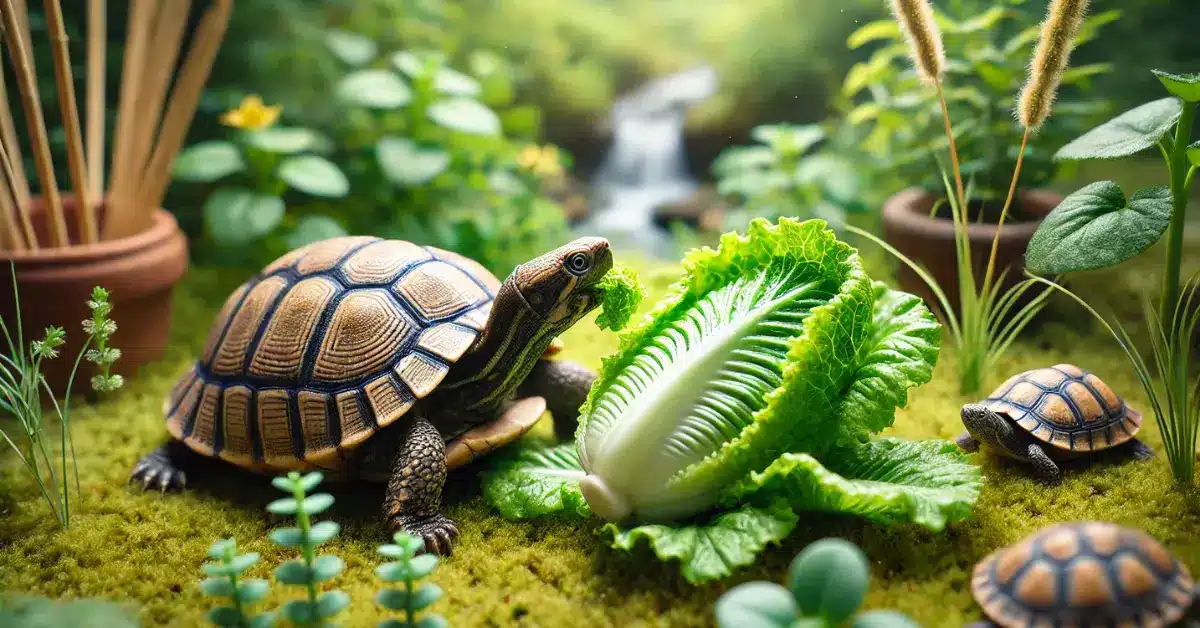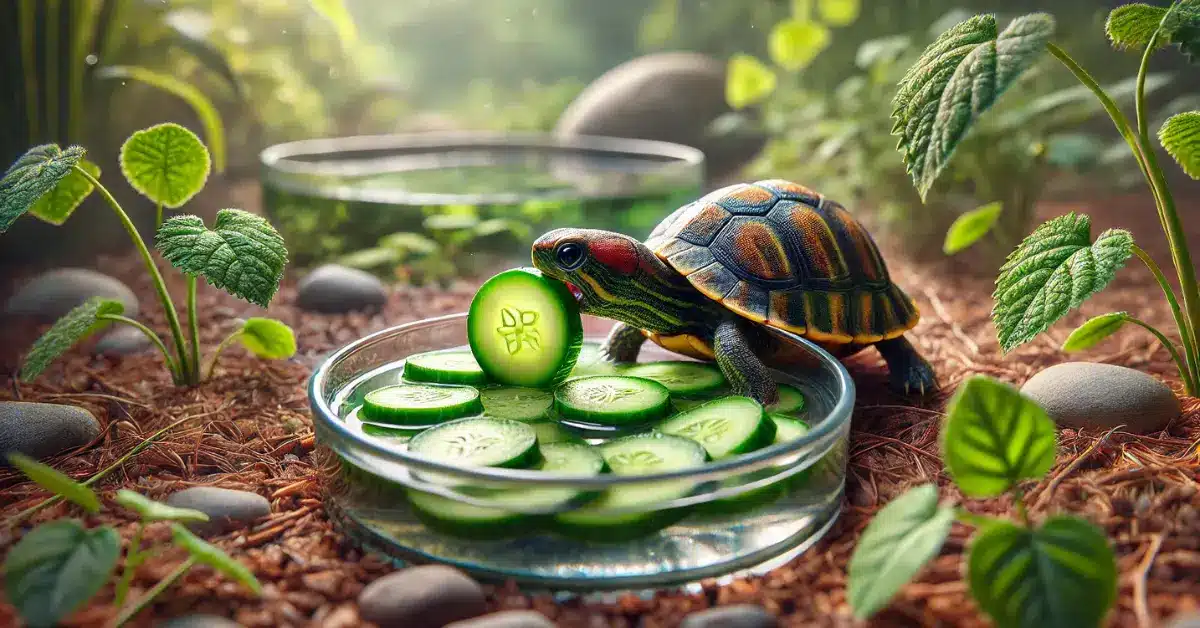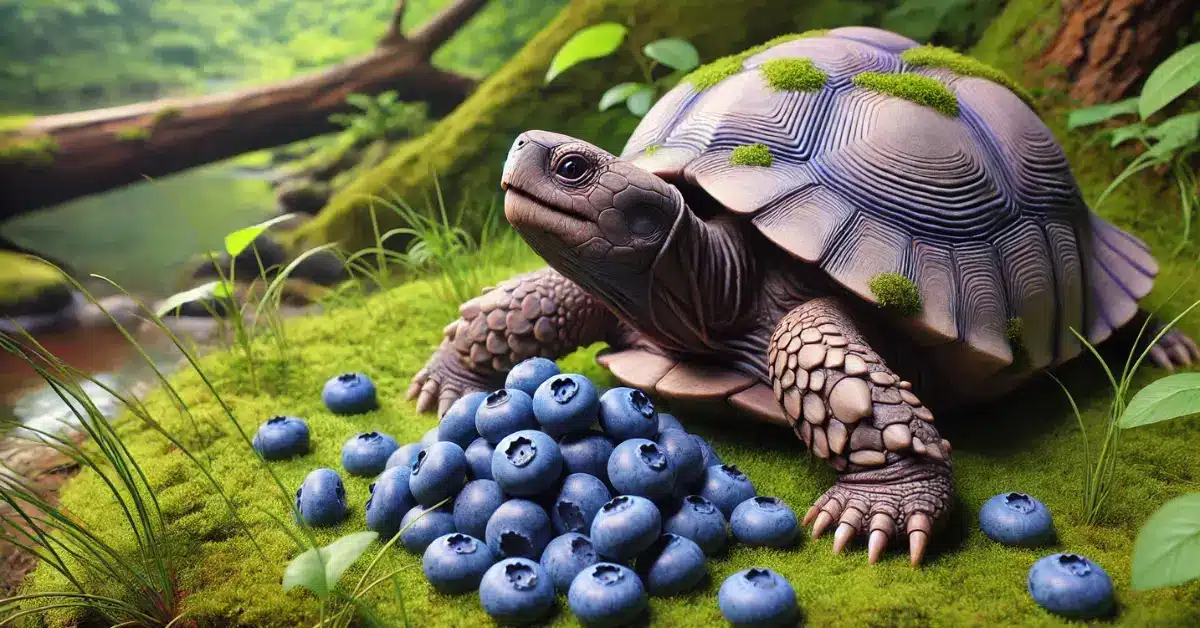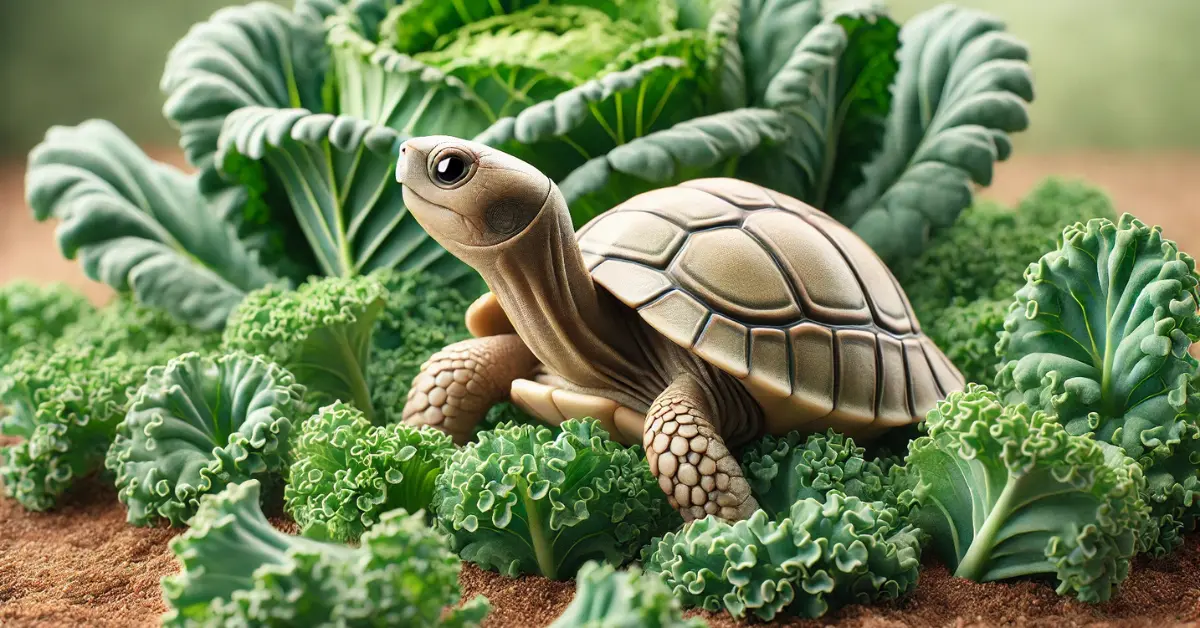If you have a turtle, you might be asking, Can Turtles Eat Watermelon? The answer is yes! Watermelon is not only a yummy treat but also full of good nutrients that help keep your turtle healthy. In this blog, we will look at the benefits of watermelon, how to feed it safely, and what to watch out for. Let’s explore this tasty fruit and how it can fit into your turtle’s diet!
Table of Contents
ToggleNutritional Benefits of Watermelon for Turtles
| Nutrient | Amount per 100g | Benefits |
| Water | 92 g | Keeps turtles hydrated and helps them stay healthy. |
| Carbohydrates | 7.55 g | Gives turtles energy to move and grow. |
| Sugars | 6.2 g | Provides quick energy without too many calories. |
| Protein | 0.61 g | Helps build and repair muscles. |
| Fiber | 0.4 g | Aids digestion and helps prevent constipation. |
| Vitamin A | 28 µg | Supports healthy skin and good eyesight. |
| Vitamin C | 8.1 mg | Boosts the immune system and helps heal cuts. |
| Potassium | 112 mg | Helps the heart and keeps fluids balanced. |
Watermelon is full of important nutrients that help turtles stay healthy. It has a lot of water, which keeps them hydrated, especially when it’s hot outside. The carbohydrates and sugars in watermelon give turtles quick energy to play and swim. Plus, the fiber helps their digestion, making sure they feel good and active.
Health Benefits of Watermelon for Turtles

Watermelon is not only tasty; it also helps turtles in many ways:
- Hydration: Turtles can get thirsty, and watermelon helps keep them hydrated. This is especially crucial during warm weather.
- Good Digestion: The fiber in watermelon helps turtles digest their food well. A healthy tummy means they can absorb nutrients and feel comfortable.
- Strong Immune System: Vitamins A and C help turtles stay healthy. These vitamins fight off sickness, helping turtles live longer and better lives.
- Healthy Skin and Shell: Vitamin A is good for the skin. It helps turtles keep their skin and shells strong and healthy.
- Energy Boost: Watermelon gives turtles quick energy. This helps them stay active, whether they are swimming around or basking in the sun.
How to Safely Feed Watermelon to Turtles: Step-by-Step Guide
Feeding watermelon to your turtle can be a fun and healthy treat. Follow these easy steps to do it safely:
- Choose Fresh Watermelon: Pick a ripe watermelon that is fresh and has no mold. A good watermelon feels heavy and has a hard outer skin.
- Wash the Watermelon: Before cutting it, wash the outside of the watermelon with water to remove dirt or chemicals. This keeps your turtle safe.
- Cut the Watermelon: Use a clean knife to cut the watermelon into small pieces. Be sure to take out the seeds since they can be a choking risk.
- Serve in Small Amounts: Give your turtle only a little watermelon. A few pieces the size of your turtle’s head is just right. Too much fruit can upset their stomach.
- Watch Your Turtle: Keep an eye on your turtle while it eats. Make sure it is chewing and not swallowing big pieces.
- Remove Leftovers: After your turtle finishes eating, take away any leftover watermelon. Leaving food in the tank can spoil the water and make your turtle sick.
Potential Risks of Feeding Watermelon to Turtles
While watermelon is safe for turtles, there are some risks to be careful about:
- Too Much Sugar: Watermelon has sugar. If turtles eat too much, they might gain weight or have health problems. Always give fruit in small amounts.
- Choking Hazard: Big pieces of watermelon can make turtles choke. Always cut it into small, easy-to-eat bites.
- Stomach Problems: Some turtles have sensitive stomachs. If your turtle seems sick after eating watermelon, stop giving it this fruit.
- Water Quality: Leaving uneaten watermelon in the tank can make the water dirty. This can hurt your turtle’s health. Always clean up any leftovers right away.
Read More: Can Turtles Eat Popcorn?
Conclusion
To answer the question “Can Turtles Eat Watermelon?”—yes, they can! Watermelon is a tasty and healthy treat for turtles when you give it in small amounts. This yummy fruit helps keep your turtle hydrated and provides important nutrients.
Just remember to follow the safe feeding tips we talked about. Choose fresh watermelon, cut it into small pieces, and always clean up any leftovers. This will help keep your turtle happy and healthy. If your turtle seems sick after eating watermelon, talk to a vet to make sure everything is okay.
For more tips on how to care for your turtle, visit theturtles.info. Enjoy treating your pet to this delicious fruit!
FAQs about Can Turtles Eat Watermelon?
Can turtles eat watermelon every day?
No, turtles should not eat watermelon every day. Watermelon is high in sugar, so it’s best to offer it as a treat in small amounts once in a while.
How should I prepare watermelon for my turtle?
To prepare watermelon for your turtle, wash it thoroughly, cut it into small pieces, and remove any seeds. Serve only a few small pieces at a time.
What are the benefits of watermelon for turtles?
Watermelon helps keep turtles hydrated and provides essential vitamins and nutrients. It can also aid in digestion due to its fiber content.
Are there any risks to feeding watermelon to turtles?
Yes, there are some risks. Eating too much watermelon can lead to weight gain or stomach problems. Also, large pieces can be a choking hazard, so always cut the fruit into small bites.
Can all types of turtles eat watermelon?
Most turtles can eat watermelon, but it’s always good to check if your specific type of turtle has any dietary restrictions. Consult a vet if you’re unsure.
What other fruits can I feed my turtle?
Besides watermelon, you can feed turtles other fruits like strawberries, blueberries, and cantaloupe in small amounts. Always take out the seeds and chop the fruit into small pieces.
How often can I give my turtle watermelon?
It’s best to offer watermelon as an occasional treat, maybe once every week or two, depending on your turtle’s overall diet and health.
Should I remove the skin from watermelon before feeding it to my turtle?
You don’t need to remove the skin, but some turtles might prefer the fruit without it. It’s safe to give the fleshy part of the watermelon.






